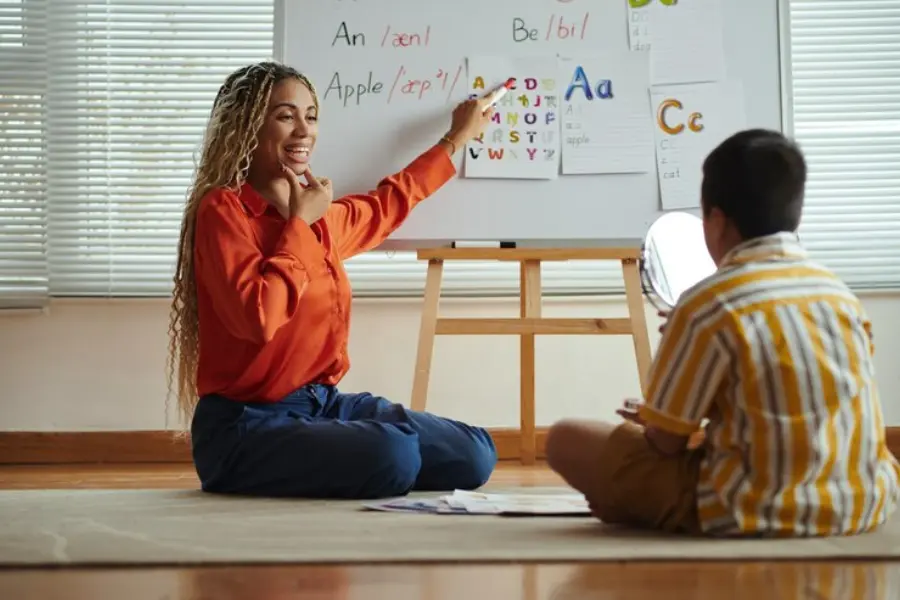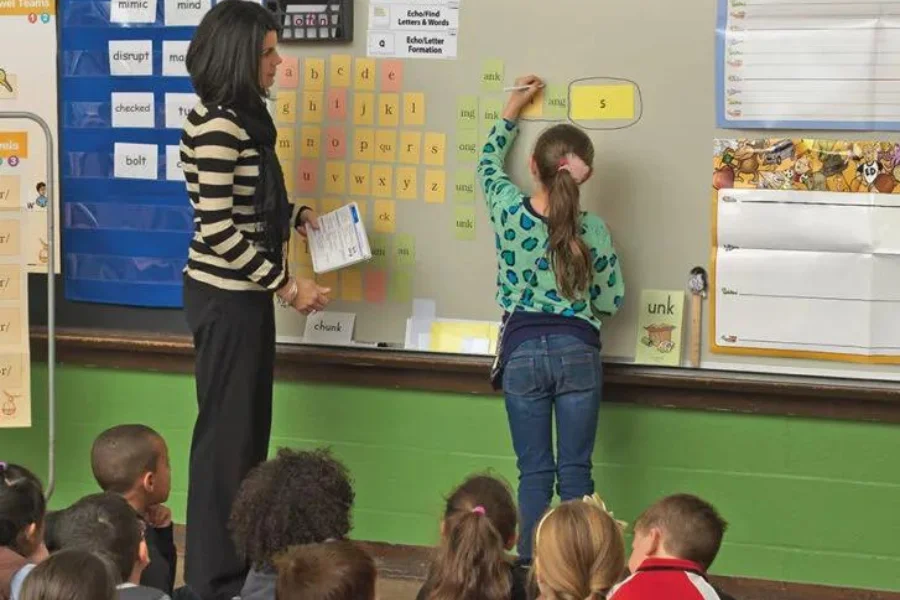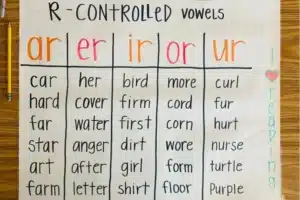
Source: freepik
Learning to spell words accurately becomes more effortless when one comprehends the Rules of Phonetics for Spelling. Children with an understanding of the Rules of Phonetics for Spelling are generally more proficient readers and can interpret words with confidence.
Through this post, we will discover the significance of the Rules of Phonetics for Spelling with suitable examples, and offer real-world guidance to help young learners dominate this crucial aspect of reading. Emphasizing the Rules of Phonetics for Spelling not only lifts reading confidence but also enhances a child’s capability to sound out words independently.
What are the Basic Phonetic Rules?
A widely adopted practice is familiarizing children with the Basic Phonetic Rules. It helps learners relate sounds to spelling patterns more accurately, making it a significant element in phonics instruction.
Below are some of the fundamental Rules of Phonetics for Spelling:
Short and Long Vowel Sounds
A vowel is generally short when tracked by a consonant- as in cat, pet; while a vowel is usually long when tracked by another vowel or a silent e- as in cake, seat.
Silent ‘e’ Rule
When a word concludes with a vowel-consonant-e format (like pope), the last ‘e’ is silent and causes the vowel before it to be long.
Consonant Digraphs
Two letters say one sound when they occur jointly- sh in ship, ch in chair.
Diphthongs and Vowel Digraphs
Two vowel sounds are blended to form one sound in diphthongs like oi in coin or ou in house; however, the first one usually says it’s sound when two vowels appear together- boat, seat.
The C and G Rule
C and G usually have a soft sound when followed by e, i, or y (e.g., cent, giant), and a hard sound when followed by a, o, or u (e.g., cat, go).
Double Consonants
The vowel sound remains short when a double consonant follows a short vowel- rabbit, little.
The ‘Y’ Rule
At the end of a word, y often serves as a vowel. In short words like cry, it sounds like a long ‘i’. In longer words like happy, it is expressed like a long ‘e’.
Learning these Rules of Phonetics for Spelling equips children with the essential means for reading and spelling proficiency. Rules of Phonetics support early literacy expansion for future learning by lessening guesswork when tackling new words.
To join VES’s Teaching Phonics Teacher Course, call +919869866277 / +919869546913.
Click here and look Phonics Teacher Course at the brochure!
How to Teach Kids about Phonetic Spelling?
Teaching Kids about Phonetic Spelling lays the basis for blending and decoding mastery, thus helping them mature into independent readers. It helps them understand the association between letter-sound and how words are formed.
Some practical ways to Teach Kids about Phonetic Spelling include:
- Begin with Letter-Sound Association
- Use Phonics Games and Activities
- Teach CVC Words Early
- Practice Sound Blending
- Highlight Sound Patterns
- Use Picture and Word Cards
- Model Stretching Words
- Motivate Inventive Spelling
- Support through Repetition
Adopting these methods unfailingly can make learning the Phonetics Rules for Spelling easier, thus making it more natural for young learners.
To join VES’s Teaching Phonics Teacher Course, call +919869866277 / +919869546913.
Click here and look Phonics Teacher Course at the brochure!

Source: wilsonlanguage
Which are the Basic Phonetic Rules?
Understanding the Basic Phonetic Rules enables children to interpret and spell words more accurately by connecting letters to their sounds. These Rules of Phonetics form the root of early reading and writing pedagogy.
Which are the Basic Phonetic Rules?
- Short Vowel Rule: A single vowel tracked by a consonant generally has a short sound. Example: cat, bed, pin
- Long Vowel Rule: When a word has a silent ‘e’ at the end (CVCe), the foremost vowel conveys its name. Example: note, take, bike
- Vowel Digraphs: Two vowels often make one long vowel sound when they occur side by side, generally from the first vowel. Example: boat, team, rain
- Consonant Digraphs: Two consonants together that make one fresh sound. Example: sh, ch, th (as in ship, chat, thin)
- C and G Soft/Hard Rule: C and G are soft when present before e, i, or y (as in cent, giant), and hard when present before a, o, or u (as in cat, goat).
- Final Silent ‘e’: The e at the end of a word is silent and compels the vowel before it to be long. Example: name, home
- Double Consonant Rule: The last consonant is usually doubled when adding endings to short vowel words. Example: run- running, hop- hopping
- Y as a Vowel: Y at the end of longer words sounds like long e- happy, and in short words like long i- cry.
These basic Phonetics Rules for Spelling help learners decipher unfamiliar words, thus enhancing spelling accuracy and supporting reading mastery.
To join VES’s Teaching Phonics Teacher Course, call +919869866277 / +919869546913.
Click here and look Phonics Teacher Course at the brochure!
What is the Phonetic Spelling Strategy?
The Phonetic Spelling Strategy is a method where learners compose words on the basis of the sound they hear. This method benefits children in the early stages of reading and writing development by enabling them to master letter-sound association, making it an indispensable part of language learning and literacy growth. Vidhyanidhi Education Society (Govt. Regd.) offers a Phonics Teacher Training Course that equips educators with tools to teach such strategies effectively.
What is the Phonetic Spelling Strategy?
Sound-to-Letter Mapping
Children listen to a word and write down the letters they believe represent the sounds they hear. Example: “fone” for phone, “sed” for said.
Encourages Independent Writing
It helps build writing fluency without being limited by spelling knowledge.
Develops Phonemic Awareness
Kids become more aware of how sounds form words and how letters represent those sounds.
Supports Early Literacy Skills
The strategy builds confidence and lays a strong foundation for later learning of accurate spelling.
Used in Phonics-Based Instruction
It is often integrated into programs that focus on sound-letter correspondence.
Through this Phonics Course, teachers learn to guide children in understanding the Rules of Phonetics for Spelling and incorporating them in writing. The Phonics Teacher Training Course also includes modules on Phonetics for Spelling, blending, segmenting, and reading fluency—making it excellent for early literacy educators.
Join Vidhyanidhi Education Society’s engaging Phonics Teacher Course!
To join VES’s Teaching Phonics Teacher Course, call +919869866277 / +919869546913.
Click here and look Phonics Teacher Course at the brochure!
Phonics Teacher Training Course
FAQs
What are Phonetic Rules?
Guidelines that link letters or letter combinations to specific speech sounds, helping readers decode words and writers spell accurately.
What is Phonetic Spelling Based On?
Phonetic spelling is based on corresponding individual sounds (phonemes) to letters or letter clusters, reflecting pronunciation over traditional orthography.
Is Phonetic Spelling Universal?
Most languages have phonetic spelling rules, but systems vary. English isn’t fully phonetic. Vidhyanidhi Education Society highlights these in its training.



